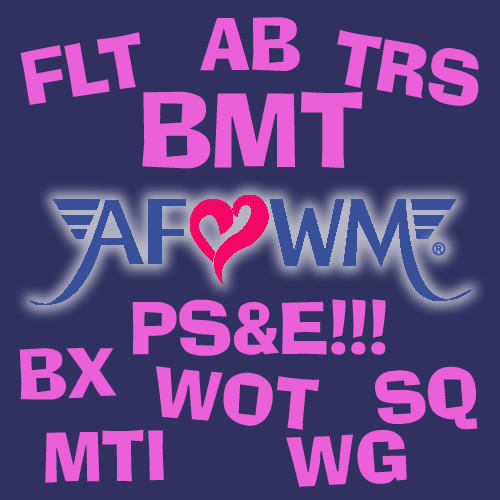The ASVAB test covers 8 general subjects. It will test not only your current knowledge, but also your propensity to learn in different subject arenas. It contains questions on English, Science, Mechanics, and Electronics. You can prepare for this test by using an ASVAB study guide. The higher you score on this test, the more options you will likely have when it comes to selecting jobs. There are a variety of study guides you can use to help prepare for this very important test. Guides can be found for loan in most major libraries or purchased at most books stores and online.
There are five scores that the Air Force utilizes from the ASVAB test. The first one is the AFQT, or the overall score. You must have an AFQT of at least 36 to qualify for the AF. Then there are four different “line” scores (Mechanical, Administrative, General, and Electronics). These are the scores that are used to determine the jobs for which you are qualified. In addition to the required score, there are physical and moral standards that must be met for each of the different careers in the Air Force. As long as you are fully qualified for a specific career, and, if there is an opening in that career field, then you can get that career guaranteed to you in your contract.
Based on Air Force requirements, the minimum Armed Forces Qualifications Test (AFQT) score required for entry on the Armed Services Vocational Aptitude Battery (ASVAB) is 36. However, due to the high number of individuals who are qualified and waiting to depart for Basic Military Training (over 90% of them possessing an ASVAB score over 50 percentile) your recruiter may not be able to process you and may ask you to return when they have space on their waiting list to add new applicants. If you haven’t already done so, contact your Air Force Recruiter to discuss your scores.
To be eligible to enlist in the Air Force, you must make an Armed Forces Qualifying Test (AFQT) score of 36 or better on the Armed Services Vocational Aptitude Battery (ASVAB) test if you graduated from High School, a 65 if you earned a GED, and 50 for Home Schooled. You must also qualify in one of the four vocational aptitude areas on the Armed Services Vocational Aptitude Battery (ASVAB); Administrative, General, Mechanical, or Electronics to be able to train and serve in the Air Force.
Every career field does in fact require more than just an overall ASVAB qualifying score which is a 36 if you graduated from High School and a 65 if you have a GED. The ASVAB is broken down into four main categories (Mechanical, Administrative, General, and Electronic), and all enlisted career fields have a minimum score requirement that fall under one or more of these categories. These scores, along with the results of your physical examination, will be reviewed when you undergo job counseling during the enlistment process at the Military Entrance Processing Station (MEPS).
Besides the four main categories, the ASVAB is divided into eight parts (for the high school version) or nine parts (for the production version). The high school version is structured as follows:
Order Subtest Number of Questions Time Allowed
Test 1 General Science (GS) 25 11 mins.
Test 2 Arithmetic Reasoning (AR) 30 36 mins.
Test 3 Word Knowledge (WK) 35 11 mins.
Test 4 Paragraph Comp (PC) 15 13 mins.
Test 5 Mathematics Knowledge (MK) 25 24 mins.
Test 6 Electronics Information (EI) 20 9 mins.
Test 7 Auto & Shop Information (AS) 25 11 mins.
Test 8 Mechanical Comprehension (MC) 25 19 mins.
The production version now includes a subtest called “Assembling Objects.” This 20- question (20 minute) subtest tests your ability to choose how an object (shown flat) will look once assembled. Imagine a cardboard box unfolded and then put together.
The ASVAB is offered at many high schools across the nation; if it is not offered at your school ask your guidance counselor for alternatives. Military recruiters also offer the ASVAB. Your recruiter will set you up to take the ASVAB at either the local Military Entrance Processing Station (MEPS) or at a satellite test site known as a MET Site.The ASVAB given at the MET Site is in the paper version (as is the high school version). The version at the MEPS, however, is a computer version. This version has a disadvantage because the tester cannot skip questions and return later to answer them.
Go to http://www.asvabprogram.com/ to learn more.



